This is an image of Hyperion.
Click on image for full size
Image from: NASA
Hyperion
Hyperion was discovered by W. Bond in 1848. Hyperion is the 3rd farthest moon from Saturn, with a standoff distance of 1,481,000 km. Hyperion is 175 x 100 km (117 x 67 miles) in size. Its dimensions make Hyperion about the size of a large county or small state.
One of the main characteristics of Hyperion is its unusual shape. It is shaped like a soda/pop can. Another unusual feature of Hyperion is that it tumbles out of control as it orbits Saturn. As a small moon, details about the composition and structure of this moon are unknown.
You might also be interested in:
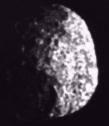
The small moons are too small to be seen, so not much is known about their surface or composition. With no knowledge of the composition, and no clues from the surface, little can be determined about the
...more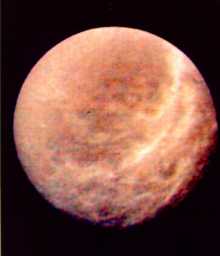
The gas giant planet Saturn has a large group of // Call the moon count function defined in the document head print_moon_count('saturn'); moons. It also has the largest, most complex, and best-known ring
...more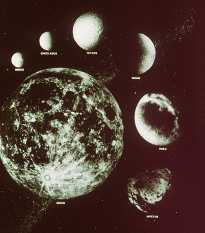
This is an image of the Earth's moon, shown in the lower left, with the much smaller icy moons of Saturn. The moons in order, starting from the top left are: Mimas, Enceladus, Tethys, Dione, Rhea, and
...more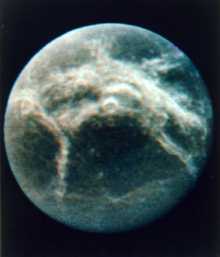
Dione was discovered by G. Cassini in 1684. Dione is the 7th farthest moon from Saturn, with a standoff distance of 377,400 km. It is a small icy moon, lightly cratered, with wispy white streaks across
...more
The surface of Dione does not have many craters. Instead it has wispy white streaks similar to those found on Rhea extending for many kilometers over the entire surface. These two things indicate that
...more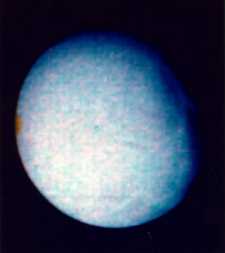
The surface of Enceladus does not have many craters. Instead it has grooves similar to those found on Ganymede. These grooves extend for many kilometers over the surface. The presence of grooves indicates
...more
Helene was discovered by the French astronomers Pierre Laques, Raymond Despiau and J. Lecacheux on February 29, 1980. Even though Helene is so far away, they were able to make their discovery at an observatory
...more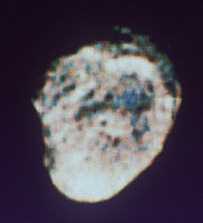
Hyperion was discovered by W. Bond in 1848. Hyperion is the 3rd farthest moon from Saturn, with a standoff distance of 1,481,000 km. Hyperion is 175 x 100 km (117 x 67 miles) in size. Its dimensions make
...more













